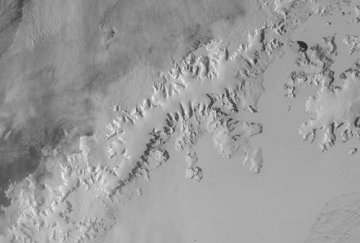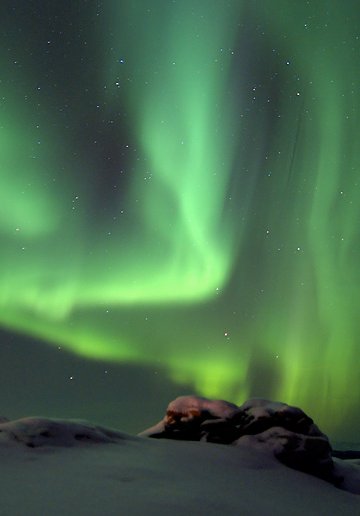 Where's Saturn? Is that a UFO--or the ISS? What's the name of that star? Get the answers from mySKY--a fun new astronomy helper from Meade. Where's Saturn? Is that a UFO--or the ISS? What's the name of that star? Get the answers from mySKY--a fun new astronomy helper from Meade. SPACE WEATHER OVER AFRICA: Scientists are converging on Ethiopia this week to discuss a new and strange form of space weather: ion plumes, which form during geomagnetic storms. Remarkably, the source of these plumes may be somewhere over Africa. Science@NASA has the full story. SPACECRAFT FLYBY: Yesterday, Europe's Rosetta spacecraft flew past Earth, swooping a mere 5300 km above the southern hemisphere. At closest approach, Rosetta's navigation camera snapped this picture of an ice field in Graham Land, Antarctica: 
Click to view more images: #1, #2
The flyby was a gravity assist maneuver to boost Rosetta's velocity en route to Comet 67/P Churyumov-Gerasimenko. When Rosetta reaches the comet in 2014, it will drop a lander on the comet's icy surface and beam back images of frigid landscapes possibly akin to the one above. Antarctica is good practice for a comet. In addition to frozen sweeps, Rosetta also took some spectacular pictures of Earth's nightside, capturing city lights and possibly some auroras, too: annotated image. Inside one of those dots of light, a team of Italian astronomers (Giovanni Sostero, Ernesto Guido, Luca Donato and Virgilio Gonano) were looking back at Rosetta. Here is the view through their 18-inch telescope; Rosetta is the dim streak of light cutting through the starry background. Bon Voyage, Rosetta! AURORA WATCH: Last night a solar wind stream hit Earth and turned the skies above Scandinavia bright green: 
"Winter has arrived in northern Norway," says photographer Petter Hamnes of Mo i Rana, Norway. "Temperatures of -15 degrees Celsius made it a cold pleasure photographing these auroras." The solar wind stream that triggered the display is expected to buffet Earth's magnetic field for several more days and, according to NOAA forecasters, there is a 10% chance of severe geomagnetic storming at high latitudes. Northern sky watchers should remain alert for auroras.
Comet 17P/Holmes Photo Gallery
[Interactive World Map of Comet Photos]
[sky map] [ephemeris] [3D orbit] [Night Sky Cameras]
| 
